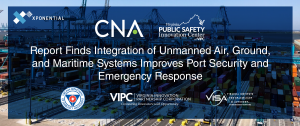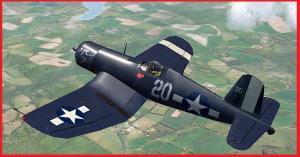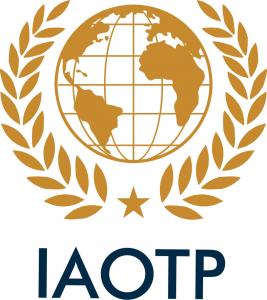A CNA study, with support from VIPC, says unmanned technology improves resilience, safety, and overall operational efficiency at any port.
— Steven Habicht, Director, CNA Corporation
RICHMOND, VIRGINIA, UNITED STATES, April 24, 2024 /EINPresswire.com/ — The CNA Corporation released a report today that highlights the substantial benefits of integrating unmanned systems technology, to include improving resilience and optimizing disaster response and recovery processes at seaports. The report is based on findings from the Port Security and Emergency Response project conducted at the Port of Virginia and the surrounding Hampton Roads region and is funded and supported by the Virginia Innovation Partnership Corporation (VIPC), the Virginia Department of Emergency Management (VDEM), and the Virginia Institute of Spaceflight and Autonomy (VISA) at Old Dominion University. You can find a PDF of the full report as well as an interactive version on CNA’s website.
Steven Habicht, Director of the Center for Enterprise Systems Modernization at CNA’s Institute for Public Research in Arlington, Virginia, and Chris Sadler, Director of the Public Safety Innovation Center at VIPC, presented the report’s key findings during a presentation today at the AUVSI Xponential conference in San Diego. At the conference, which serves as the premier global gathering for industry, VIPC is also hosting the Virginia Pavilion to showcase the state’s unmanned systems organizations, including CNA. .
“An integrated, unmanned solution will result in more efficient monitoring of the marine environment and operational improvements that enhance the safety, security, and overall effectiveness at the port,” Habicht said. “The solution also provides scalable technologies that can be reconfigured to adapt to the evolving needs of each unique response and recovery operation.”
The project launched in 2021 with workshops for first responders to identify challenges in safeguarding one of the East Coast’s largest seaports and responding to emergencies in Virginia’s most populous region. Feedback from the public safety agencies identified the types of platforms, sensors, and information systems to use for the testing.
Five solutions were selected for the project and tested in emergency simulations to detect events affecting the port and community. These solutions addressed marine environment issues, hazardous materials, search and rescue operations, security concerns, disaster preparedness and recovery, and port operations and reconstitution efforts.
“A port closure following a major storm can result in millions of dollars in lost revenue per day. Conventional recovery methods are time intensive and often redirect essential resources that could be allocated more effectively elsewhere,” said VIPC’s Sadler, who is also a retired deputy fire chief from York County, Virginia. “While unmanned systems technology is increasingly involved in public safety operations, it’s necessary to thoroughly assess new solutions to verify their effectiveness and alignment with the goals of the mission.”
Five Virginia companies provided the unmanned systems solutions for the project:
Analytical Mechanics Associates (AMA) of Hampton demonstrated a low-cost modular Autonomous Surface Vehicle (ASV) that navigates to specific waypoints to detect air and water quality parameters, identify foreign bodies, and conduct seafloor inspections.
ANRA Technologies of Chantilly utilized a single software platform that connects and integrates unmanned aerial, marine, and ground vehicles to provide improved and enhanced safety, security, and operational effectiveness.
Alliance Solutions Group (ASG) of Newport News showed the capability of its ArgusElite® Unmanned Aircraft System (UAS) to provide enhanced situational awareness and rapid deployment of recovery resources for responding to hazardous materials incidents.
Sentinel Robotics Systems (SRS) Group of Wallops Island deployed an Internet Protocol (IP)-based command and control mesh communications network that enable improved communication and coordination of unmanned systems with real-time situational awareness.
Tridentis of Alexandria launched its Autonomous Coastal Monitor (ACM) unmanned surface maritime system, which includes multiple marine, sea-air interface, and atmospheric sensor installations for disaster recovery, pollution control and security.
“With collaborative support from key stakeholders and innovative solutions from Virginia-based companies, this initiative paves the way for transformative advancements of unmanned systems in disaster preparedness and recovery,” said David Bowles, senior research fellow at VISA. “As the findings continue to inform policy and practice, the benefits of these efforts extend far beyond the Port of Virginia, shaping a safer and more resilient future for maritime operations worldwide.”
About CNA
CNA is a nonprofit research and analysis organization dedicated to the safety and security of the nation. It operates the Center for Naval Analyses—the federally funded research and development center (FFRDC) of the Department of the Navy—as well as the Institute for Public Research. CNA develops actionable solutions to complex problems of national importance. With nearly 700 scientists, analysts, and professional staff, CNA takes a real-world approach to gathering data. Its unique Field Program places analysts on aircraft carriers and military bases, in squad rooms and crisis centers, working side by side with operators and decision-makers around the world. CNA supports naval operations, fleet readiness, and strategic competition. Its non-defense research portfolio includes criminal justice, homeland security, and data management.
About VISA
The Virginia Institute for Spaceflight and Autonomy (VISA) at Old Dominion University, located on the Eastern Shore, is chartered to grow the entrepreneurial ecosystems for space flight and autonomy. The Institute is the hub to leverage Virginia’s world-class assets in space launch, autonomous systems, modeling and simulation and data science to solve real-world problems, such as those being explored by DroneUp and Riverside Health. Through industry, academic and governmental agency partnerships, VISA’s vision is to create an environment of research, technology, commercialization, and educational opportunities to grow the spaceflight and autonomous systems industry. For more information, go to www.visaatodu.org
About Virginia Innovation Partnership Corporation (VIPC)
Connecting innovators with opportunities. As the nonprofit operations arm of the Virginia Innovation Partnership Authority (VIPA), VIPC is the commercialization and seed stage economic development driver in the Commonwealth that leads funding, infrastructure, and policy initiatives to support Virginia’s innovators, entrepreneurs, startups, and market development strategies.
VIPC also collaborates with local, regional, state, and federal partners to support the expansion and diversification of Virginia’s economy. Programs include: Virginia Venture Partners (VVP) | VVP Fund of Funds | Commonwealth Commercialization Fund (CCF) | Petersburg Founders Fund (PFF) | Smart Communities | The Virginia Smart Community Testbed | The Virginia Unmanned Systems Center | Virginia Advanced Air Mobility Alliance (VAAMA) | The Public Safety Innovation Center (PSIC)| Entrepreneurial Ecosystems | Regional Innovation Fund (RIF) | Federal Funding Assistance Program (FFAP) for SBIR & STTR | University Partnerships | Startup Company Mentoring & Engagement. For more information, please visit www.VirginiaIPC.org. Follow VIPC on Facebook, X (formerly Twitter), and LinkedIn.
Angela Costello, Vice President of Communications
Virginia Innovation Partnership Corporation (VIPC)
[email protected]
Visit us on social media:
Facebook
Twitter
LinkedIn
![]()
Originally published at https://www.einpresswire.com/article/705676875/report-finds-integration-of-unmanned-air-ground-and-maritime-systems-improves-port-security-and-emergency-response





